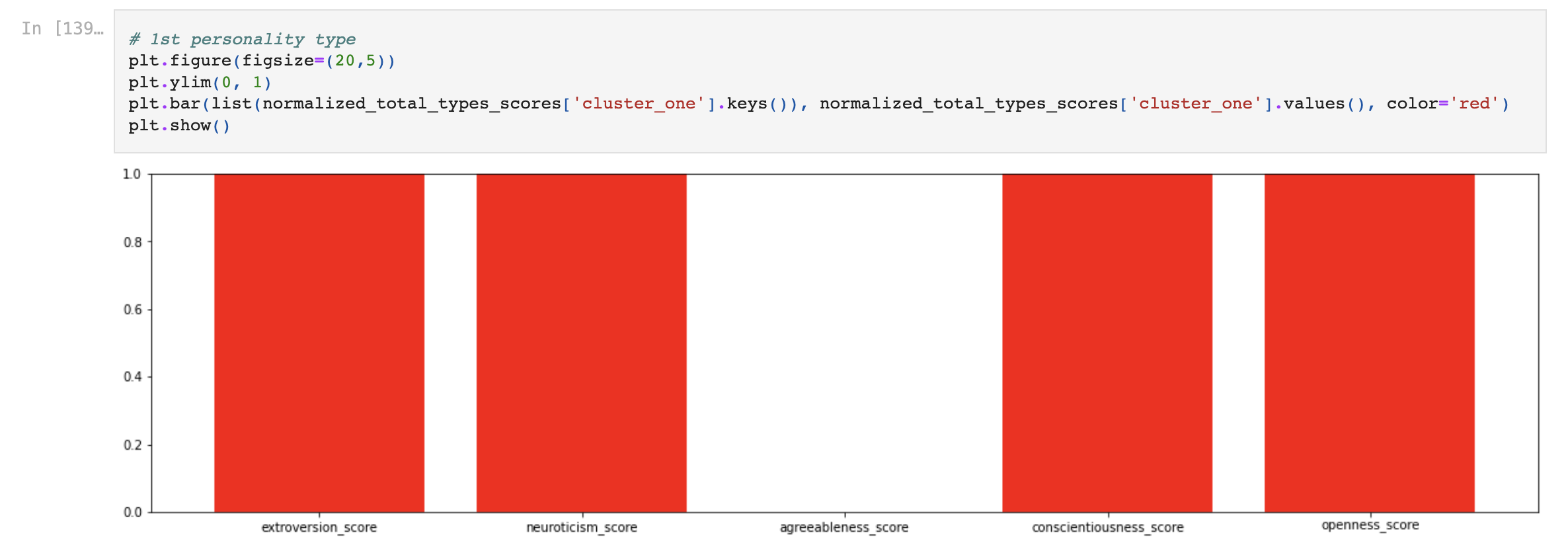Big Five Personality Test
psychology | data visualization | machine learning
Decoding personality types
Decoding personality types
roles: machine learning researcher | data analyst
The five-factor model (FFM) taxonomy for personality traits
Motivation
I was curious to see how I could tell the personality type of millions of people simply from them answering a survey. I used machine learning to reduce the number of attributes when the relationships between them were not that obvious, like something as variable as a person’s openness or extraversion. It was beautiful to see a person’s psyche quantitatively and reflected in OCEAN (Openness, Conscientiousness, Extraversion, Agreeableness, Neuroticism) scores based on social psychology’s Big-Five Factor Markers from the International Personality Item Pool (Goldberg, 1992). Where for instance, a non-messy and prepared person would be scored as highly conscientious.
OCEAN Traits Range
Description
Coupled unsupervised learning with applied factor analysis to the five-factor model (FFM), an empirically-researched taxonomy for personality traits used to describe the human personality and psyche. I programmed these statistical algorithms on an Open Psychometrics dataset with 1,015,342 answered questionnaires based on descriptors of common language and not on neuropsychological experiments for accessibility. Used K-means clustering and feature scaling (min-max normalization) in Python to group certain trait variances into 1 out of 10 possible personality types.
Personality Survey Codebook
The 10 Personality Types
Personality 1
Personality 2
Personality 3
Personality 4
Personality 5
Personality 6
Personality 7
Personality 8
Personality 9
Personality 10
References
Goldberg, L. R. (1992). The Development of Markers for the Big-Five Factor Structure. Psychological Assessment, 4(1), 26–42. https://doi.org/10.1037/1040-3590.4.1.26










